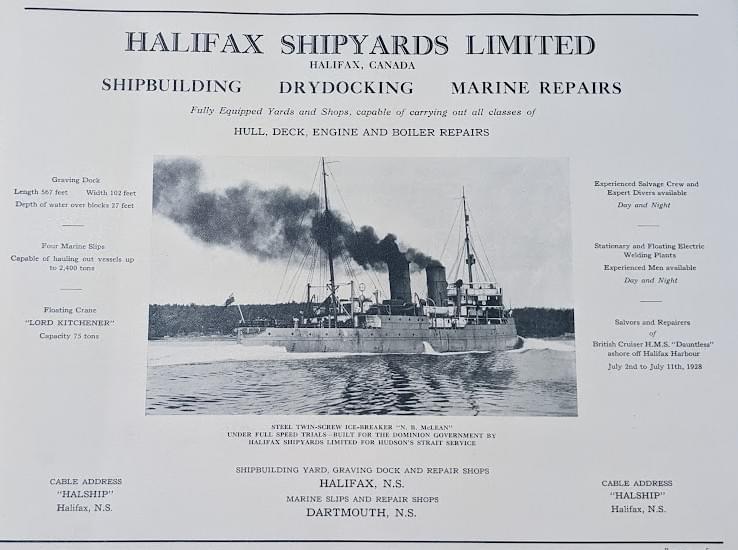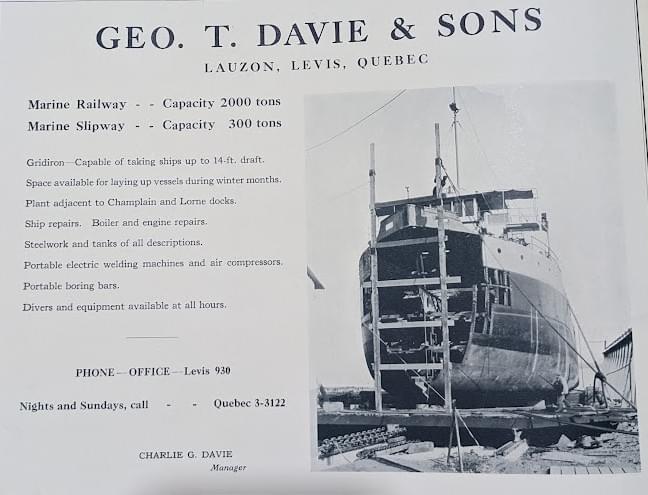This past Thursday, I went into a thrift store to check out the bookshelves. A habit that sometimes bears fruit. And not always typical things, sometimes they are quirky. I spied a bit of an oversized book sticking out at the end of a shelf. No markings, just a narrow black spine. Pulled it out and looked at a jaunty little boat, with a title "Floating Equipment." And on the back cover an anchor. Pretty quirky, I thought as I lowered it into the cart.
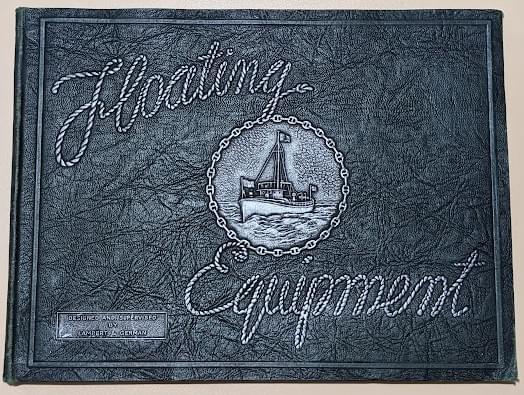
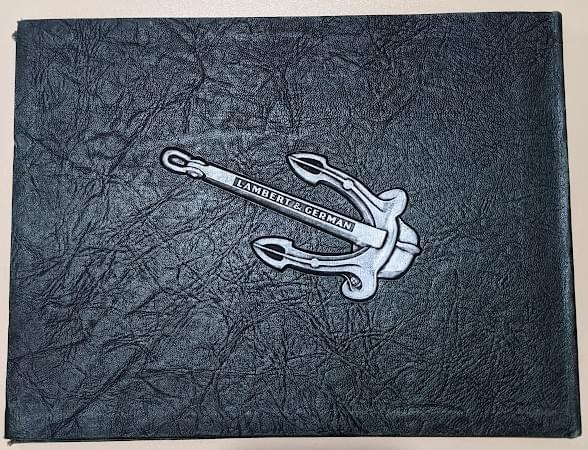
That evening, as I looked through the volume, it started to lose its quirkiness and morphed into a historical Canadian shipbuilding item. I started to research around the internet for more information, and it wasn’t long before I came across a rather official looking text.

Our latest acquisition was featured quite prominently in this history of Canadian
shipbuilding.
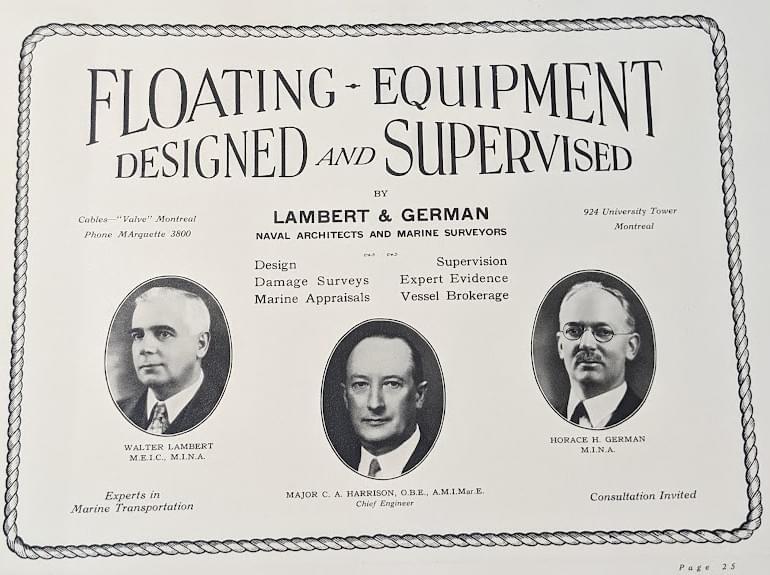
Earlier this evening, I posted the book up on Abebooks and here is its description:
“Floating Equipment; by Walter Lambert and Horace H. German; published by Lambert & German Naval Architects, Montreal, 1932. From A History of Shipbuilding and Naval Architecture, by Garth Wilson, National Museum of Science and Technology, Ottawa, Canada, 1994, page 53 – In Montreal, the 1920s also saw the establishment of what would become Canada’s best-known firm of naval architects: Lambert & German. Walter Lamber, the founder, had originally come from Britain in the service of the IMB, while Horace German had come to Montreal to work at Canadian Vickers in 1913. That such a firm should arise at a time of diminishing construction contracts indicates that most Canadian steel shipyards, born of war, were mere assembly sites, building established designs. On page 62 of the History, the section headed "Ship Design and Construction in 20th Century Canada: The Merger of Science with Industry" begins with a quote from this book – The efficiency of a ship does not vary as the Builder, but rather according to its design and specifications… The design and construction supervision of new tonnage is essentially the function of the Naval Architect…The Naval Architect’s services eliminate wasteful duplication of effort and enables strictly competitive prices to be obtained.” Back on page 53 of the History – With the onset of the Great Depression, the prospects for Canadian shipbuilders worsened, and yards operating between the wars survived largely on the basis of ship-repair and miscellaneous structural fabrication. This book, "Floating Equipment" is basically a marketing piece by Lambert & German, trying very hard to drum up design and project management work. That is why no expenses were spared in the production of this 101-page sales pitch. The front and back sections are full page ads from suppliers and customers. There is a listing of almost 40 clients, a page of photos of almost 20 shipbuilding personalities with the biggest picture in the center of George Davie. There are two ads featuring Davie Shipbuilding, Levis, Quebec. The very attractive covers of the book, look like leather, but are in fact made of paper from the Herald Press, Montreal.
This book is in fine condition, and a deserving home could be in a Canadian Shipbuilding Library or equally in a Canadian Historical Marketing Library. A very important Canadian book that is exceeding scarce. Additional photos could be provided.”
Here are some photos that could well have decorated the History of Shipbuilding book.
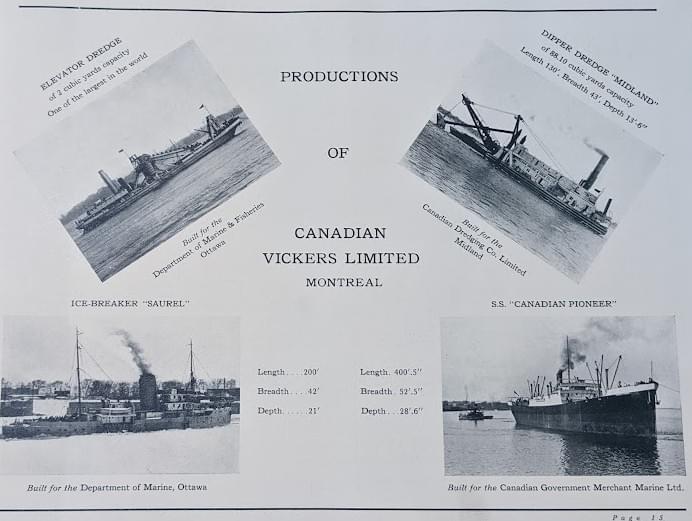
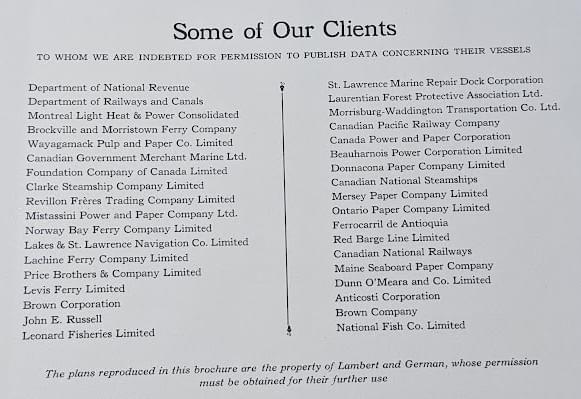
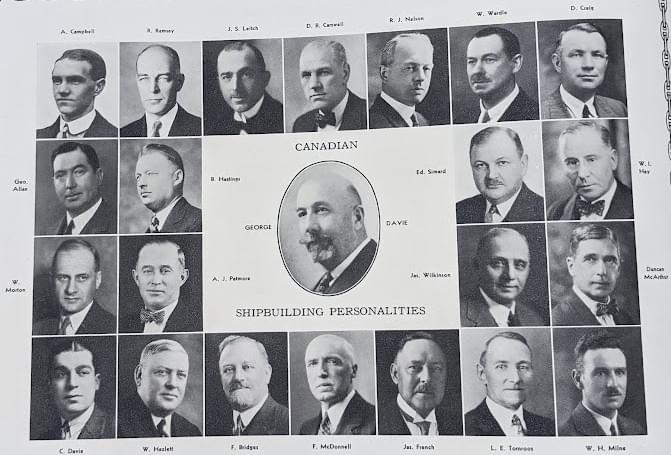
While "Floating Equipment" is of historical interest, it is primarily a sales and marketing piece. I got my MBA at the Kellogg School of Management, Northwestern University, Evanston Illinois, which is one of the premier marketing schools on this planet. This book could have been used to describe a premier marketing piece from the days of the Great Depression. This Musing could be called “Industrial Marketing in 1930s Canada”.
I have no idea how many copies were printed, likely quite limited given its cost and the business environment, and not many are left, that is for sure. Here is the opening pitch and a copy of one of their ship designs. What they were looking for was design and project management opportunities, they were not builders.
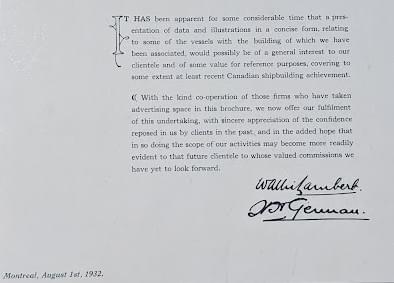
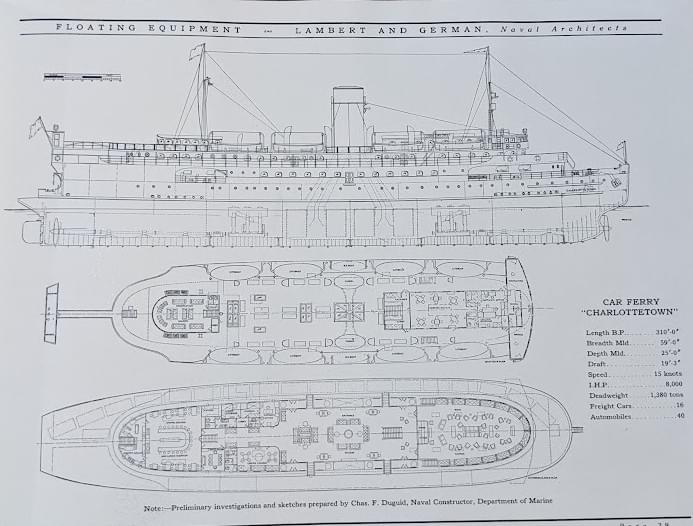
Fast forward to today, and two of the three big shipyards in the country are Davie Shipbuilding in Quebec, operating as Chantier Davie Canada Inc., and Halifax Shipyards, Irving Shipbuilding Inc.. To say that they compete with each other would be an understatement, and so I am delighted to close this musing with their ads from the "Floating Equipment" book, cozy together.
